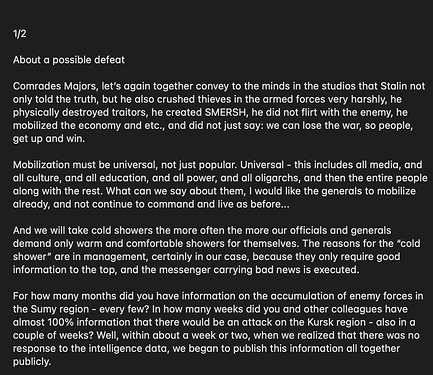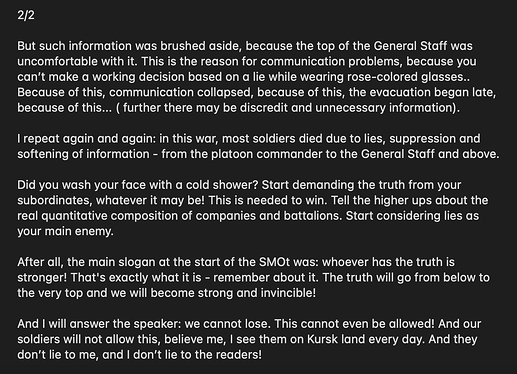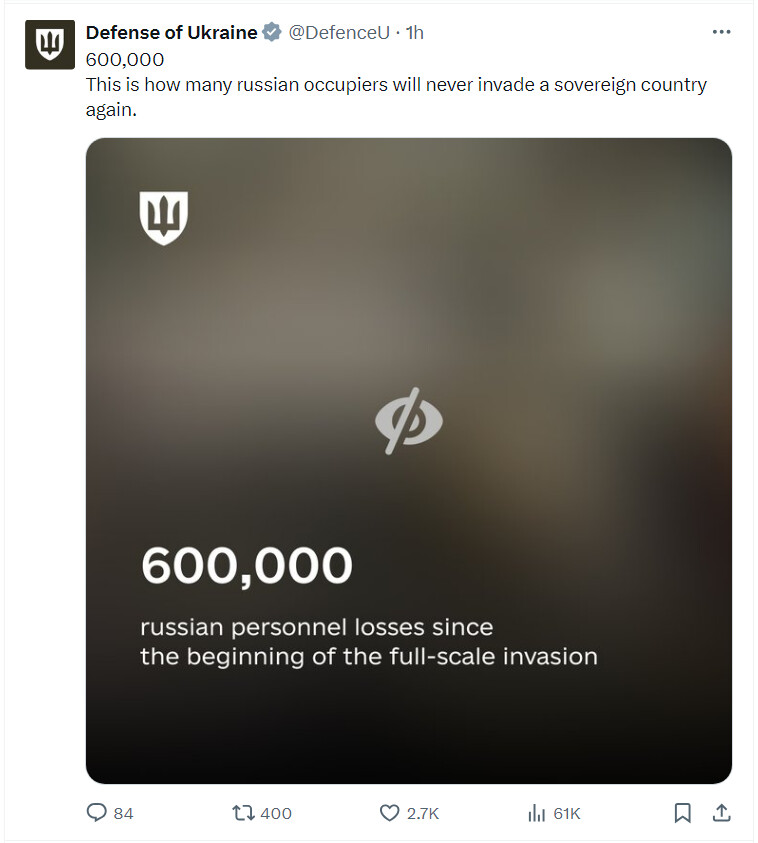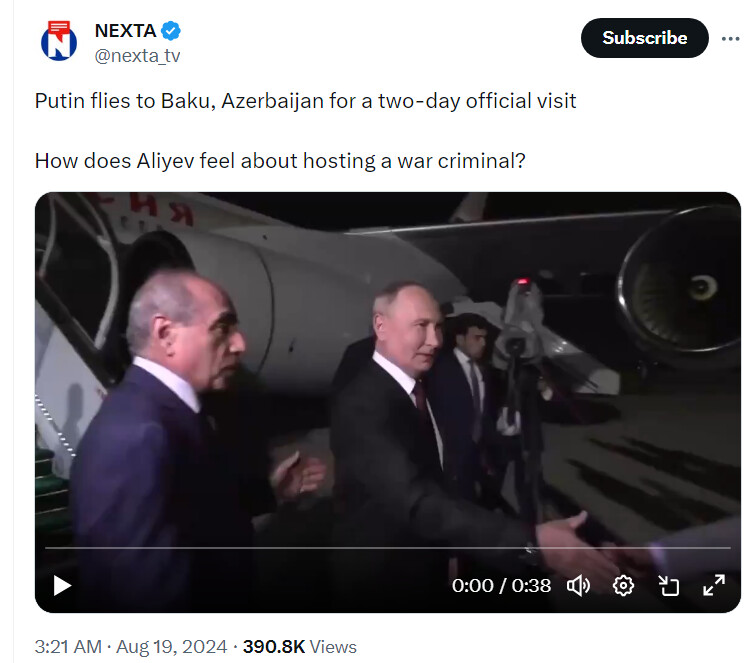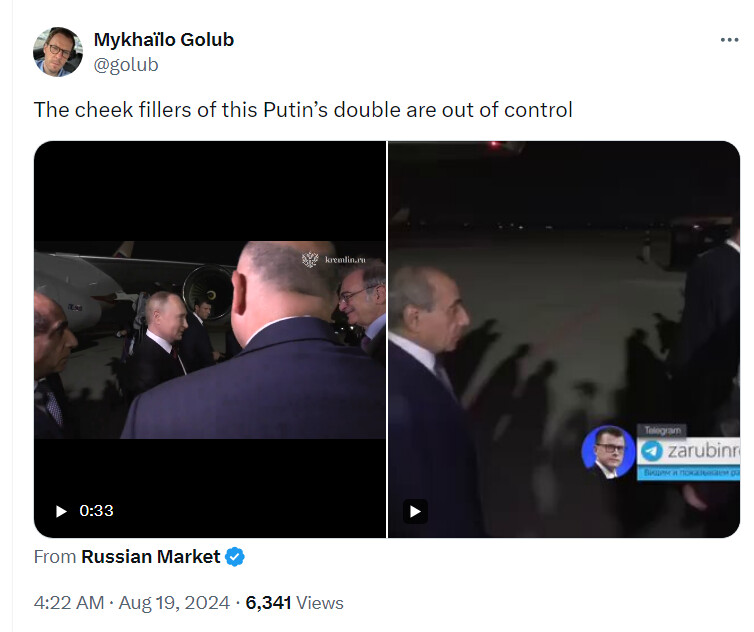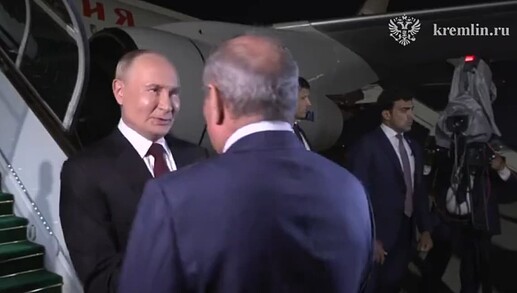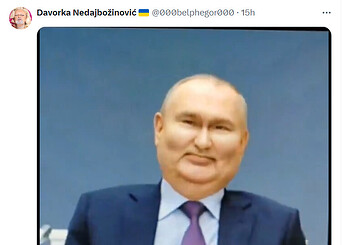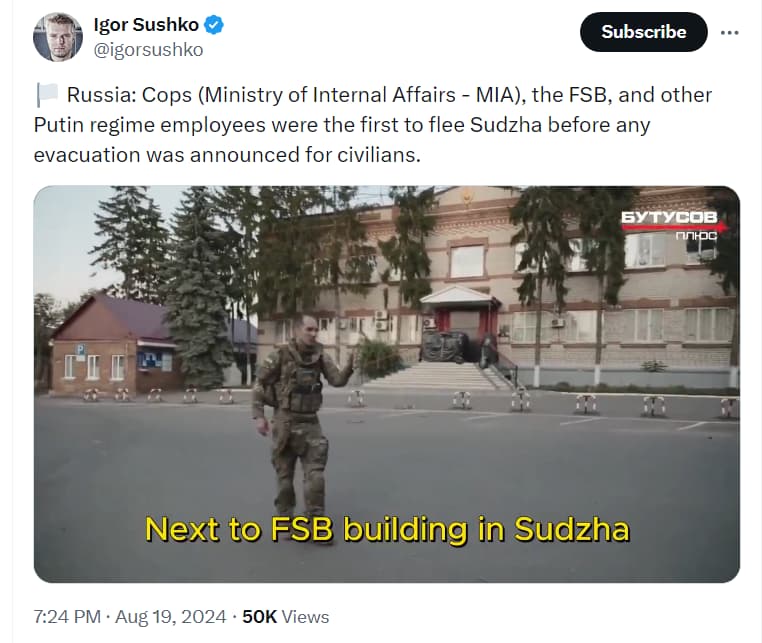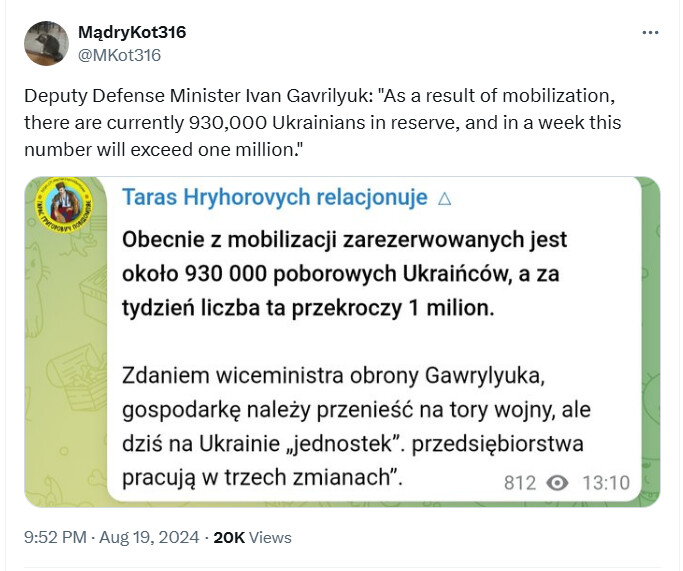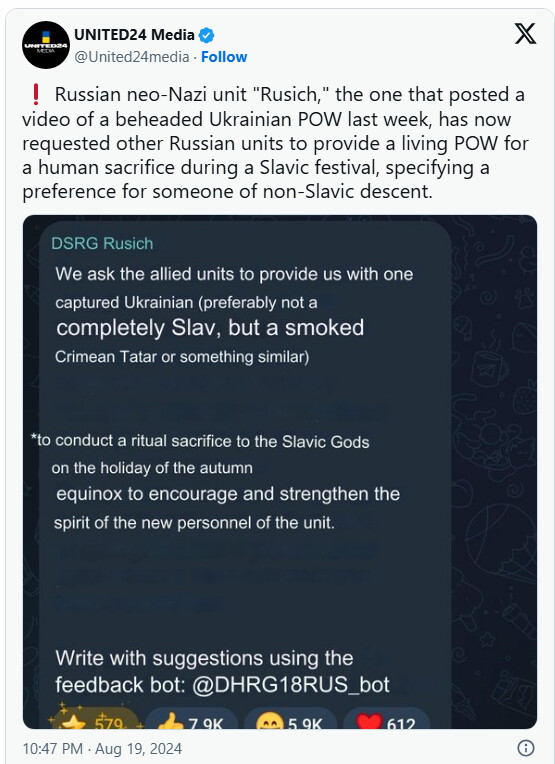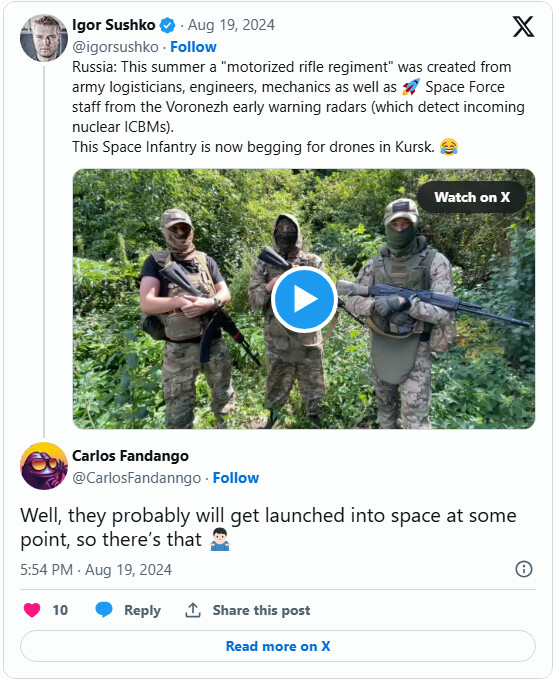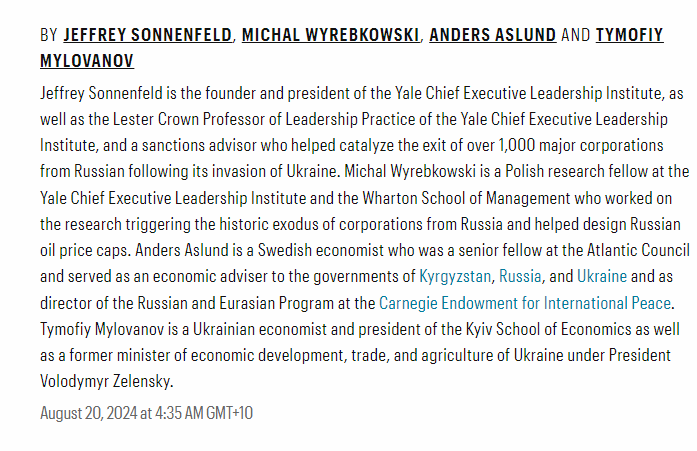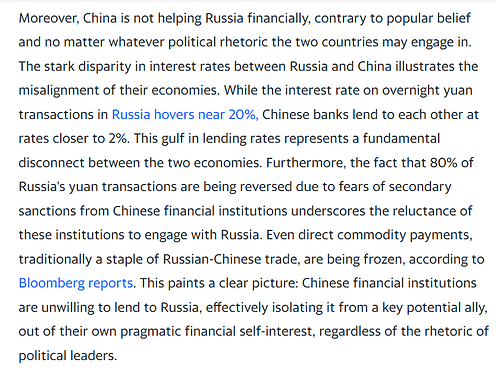An economic catastrophe is lurking beneath Russia’s GDP growth as Putin ‘throws everything into the fireplace’
Jeffrey Sonnenfeld, Michal Wyrebkowski, Anders Aslund, Tymofiy Mylovanov
Tue, 20 August 2024 at 4:35 am AEST·13-min read

Getty Images
Even as Ukrainian advances in the Kursk region pierce Russia’s aura of military invincibility, resurgent cynics have painted an unrealistically optimistic picture of a supposedly resilient Russian economy despite sanctions and the exit of over 1,000 global multinational corporations.
This misleading narrative attributes Russia’s apparent economic continuity to aggressive government spending and efforts to shield the population from restrictive monetary policies through extreme fiscal stimulus. However, this rosy outlook is fundamentally flawed, except for one crucial observation: Russia is indeed engaged in unsustainable spending practices.
The reality of Russia’s economic situation is far more complex and concerning than some would have you believe. The productive core of the Russian economy has been severely compromised, with the government’s spending spree bearing a striking resemblance to Keynes’ famous metaphor of digging trenches and filling them with dirt—a superficial attempt to prop up GDP figures without creating genuine economic value, improving the lives of the Russian people, or improving Russian productivity. Financial, production, and human resources have been redirected en masse to the defense sector, leaving the civilian sector struggling to meet growing consumer demand. This imbalance—cannibalizing the rest of the Russian economy to fund Putin’s war—has fueled inflation, further exacerbated by the depreciation of the ruble and rising import costs.
Simply put, Putin’s administration has prioritized military production over all else in the economy, at substantial cost. While the defense industry expands, Russian consumers are increasingly burdened with debt, potentially setting the stage for a looming crisis. The excessive focus on military spending is crowding out productive investments in other sectors of the economy, stifling long-term growth prospects and innovation.
It’s crucial to approach Russian economic data with skepticism. As we’ve repeatedly highlighted, the country’s statistical services have a documented history of distorting economic indicators, making it challenging to accurately assess the true state of the economy. In light of these factors, the apparent resilience of the Russian economy is more illusion than reality, especially on the following key fronts.
Mortgaging the future to pay for Putin’s war today
Despite increases in Russian budget revenues, mostly the result of a devalued ruble, continuously growing inflation (hence growing revenues from sales tax), and new levies and taxes all over the economy: a rise in the excise duty on cigarettes and cars, a windfall tax on the metallurgical and fertilizer sector, a tax on the sale of Russian assets by Western companies, and many more—the Russian budget still finds itself running a 2% deficit of GDP, which is significant by Russian standards. Russia is fast running through the reserves that it accumulated over the 2000s and 2010s—or at least the half that is not frozen in the West and being repurposed to help Ukraine by the G7 governments. Today, the total distributable liquid assets remaining in Russia are just short of $100 billion. Putin’s cronies point to sizable yuan-denominated holdings stored with the Chinese Central Bank, ignoring the unenviable reality that this means China holds disproportionate sway over the future of Russian finances.
The biggest revenue item for Russia has always been oil and gas sector proceeds, which constitute one-third of the total budget revenues. The only reason why we see these revenues growing (still below expectations) is due to significantly higher taxes imposed on oil and gas producers, which cannibalizes their productive assets and impedes their ability to reinvest in future production, mortgaging the future to pay for Putin’s war today.
Russia has implemented a mineral extraction tax on its oil and gas giants and increased the corporate tax rate for Novatek, its only LNG producer, from 20% to 34%, while increasing the overall corporate tax rate by 25% across the board effective January 2025. Measures like these, paired with Western sanctions and the voluntary withdrawal of global multinational businesses, stifle investment critical to the future of the Russian economy. Moreover, key development projects such as Arctic LNG-2 have been brought to a halt due to the exit of companies like Linde, Baker Hughes, and Technip, along with sweeping U.S. sanctions.
Over the past months, Russian crude has been trading at an average $10 discount compared to benchmark Brent oil prices, and natural gas prices returned largely to depressed pre-war levels, as we clearly see reflected in the poor economic performance of the Russian state giants. Gazprom’s net loss amounted to 480.6 billion rubles for the period from January to June 2024, compared to a net loss of 255 billion rubles in the same period last year—a record for poor performance. Additionally, the net sales of foreign currencies by the largest exporters fell to $11.5 billion in July from $14.5 billion in June.
The only reason why the budget revenues continue to increase is because of harmful inflation and the overall labor shortage in Russia—partially thanks to the exodus of millions of educated Russian workers following Putin’s invasion—which translates to insatiable wage pressure and spikes in the prices of manufactured goods. Russia is bleeding dry its private sector, which has a hard time competing against the defense sector wages. None of that is sustainable in the longer term. The Russian budget is effectively an act of desperation in wartime. Putin is throwing everything into the fireplace—and it’s completely unsustainable.
The Kremlin is forcing the increasingly heavy costs of its war on the Russian population
The Kremlin’s approach to social welfare and resource allocation during wartime reveals a stark contrast between military spending and civilian welfare. While the government has poured an estimated 2.75 to 3 trillion rubles (equivalent to 1.4-1.6% of Russia’s expected GDP in 2024) into payments for soldiers, the wounded, and families of the deceased, the civilian population faces a different reality. These military payments, amounting to 3.4-3.7% of all consumer spending by Russians in 2023, have further increased inflationary pressures. However, Russia’s war Keynesianism masks the true wretched state of welfare for the broader population. Announced increases in pensions and public sector salaries often fail to materialize, with public sector salary increases implemented in merely 13% of Russian regions, despite Putin’s decrees—exposing a huge gap between propaganda and reality.
The methodology for calculating these salaries is manipulated through procedural tricks, such as reducing employee numbers through sleight of hand. Consequently, 60% of Russian physicians report that their salaries are insufficient to meet basic needs, with 80% working multiple jobs to make ends meet. Meanwhile, Russia has experienced a massive brain drain, losing over a million highly educated individuals, 86% of whom are under the age of 45 and 80% college degree holders, according to a French Institute of International Relations report.
Notwithstanding the political repressions imposed by the Kremlin, there is a strong economic rationale for this dramatic talent flight. IT workers’ salaries in Russia have decreased by 15-25% in 2024, down to 150,000 rubles, driven in part by the exodus of global multinational companies from the country.
The redistribution of welfare is clearly targeted, prioritizing military expenditures over civilian needs and effectively shifting the economic burden of the war onto the broader Russian population while creating an illusion of economic stability through military spending for a tiny subsection of beneficiaries.
Unsustainable monetary policy and trade weakness are revealing structural flaws in Russia’s economy
The inflationary pressures on the Russian economy remain high, despite the Russian Central Bank setting an interest rate of 18%. An annualized rate of price increases from May to July stands at 10%, driven significantly by war spending. This economic militarization is accelerating inflation in a fundamental way: increased production of military goods boosts employment and wages, but the resulting surge in demand isn’t matched by a corresponding increase in consumer goods production. Normally, such an imbalance would be offset by increased imports. Under current conditions, this correction isn’t occurring. In fact, according to the Russian Central Bank’s preliminary estimate, imports in May 2024 were 10% lower than in May 2023, exacerbating the supply-demand mismatch.
The business environment is rapidly deteriorating, with the Russian Central Bank’s assessment showing an almost crisis-like 4.75-point monthly decline. Labor shortages are driving unsustainable wage growth, especially in the military-industrial complex, creating an inflationary wage spiral. While seemingly positive for workers, wage growth is outpacing the minimal productivity gains in Russia while fueling further inflation, which is borne by those very workers as they live their everyday lives. Russian businesses, having levered up in expectation of rate cuts, now face a harsh reality in an increasingly closed economy where such cuts are unlikely. The increase in output is not structural but driven by idiosyncrasies such as the completion of large metalworking orders, predominantly concentrated in the state-controlled armaments industry. All these factors combine to create a self-reinforcing cycle of inflation and economic instability, pointing towards an impending downturn and threatening to destabilize the entire economic structure.
The notion that increased interest rates will attract Indian and Chinese investors to Russia is also fundamentally flawed. In reality, Russian treasuries have become toxic assets, and the country teeters on the brink of financial insolvency. The country has become completely cut off from global financial markets and pools of capital. Simply put, no investor from anywhere in the world wants to purchase Russian securities. The only buyers of Russian sovereign bonds at scale are Russian financial institutions, making it impossible for Russia to finance its large deficits. Furthermore, it has become impossible for Russian companies to tap into global debt or equity markets to raise desperately needed funds. The idea that ruble-yuan transactions could form the foundation of a new, non-dollar financial world order, as many Putin cronies optimistically predict, is laughable, with a vast majority of global trade transacted in the dollar.
Moreover, China is not helping Russia financially, contrary to popular belief and no matter whatever political rhetoric the two countries may engage in. The stark disparity in interest rates between Russia and China illustrates the misalignment of their economies. While the interest rate on overnight yuan transactions in Russia hovers near 20%, Chinese banks lend to each other at rates closer to 2%. This gulf in lending rates represents a fundamental disconnect between the two economies. Furthermore, the fact that 80% of Russia’s yuan transactions are being reversed due to fears of secondary sanctions from Chinese financial institutions underscores the reluctance of these institutions to engage with Russia. Even direct commodity payments, traditionally a staple of Russian-Chinese trade, are being frozen, according to Bloomberg reports. This paints a clear picture: Chinese financial institutions are unwilling to lend to Russia, effectively isolating it from a key potential ally, out of their own pragmatic financial self-interest, regardless of the rhetoric of political leaders.
Similarly, the hope of Putin’s cronies that investors from India and China would seamlessly replace Western oil and gas companies in Russia has also proven to be unrealistic. Indian investment in Russia has stagnated and totaled a mere $14 bln by the end of 2023, close to pre-war levels, while the overall value of greenfield foreign direct investments from all countries decreased from $14.9 bln in 2021 to a meager $300 million in 2022.
The current climate of fear surrounding secondary sanctions and stringent wartime regulations has deterred significant investment out of pure financial self-interest. Even Chinese companies that had previously shown interest, such as Sinopec, have suspended operations and investment talks in Russia.
The forced pivot to Chinese technology has also proven costly for Russia. Novatek, for instance, reported a staggering $4 billion increase in capital expenditures for its Arctic LNG-2 project, attributed to the necessity of replacing Western equipment with Chinese alternatives.
It appears that China, India, and other Global South nations are more interested in buying discounted Russian energy than in making substantial investments in the country’s economy. Russians themselves were not capable of filling the economic niches left by the 1,000 multinationals with combined assets of over $220 billion that curtailed their operations in Russia.
For all the government spending, the rest of the economy is stagnant. The contribution of import substitution schemes to economic growth remains modest at best. Every Russian company that has tried to step into the vacated footsteps of Western predecessors still lacks crucial know-how and access to capital, being completely cut off from global capital markets. And Western pundits don’t understand that oil is now being sold at breakeven prices given Russia’s highly inefficient production costs and high transportation costs to its now-more-distant customers while natural gas remains virtually unsold.
The financial strain is not limited to cross-border trade and investment—it’s increasingly evident in the domestic credit market as well. Russians are facing growing difficulties in obtaining personal loans, a trend that signals deepening economic troubles at the household level. In July, the approval rate for unsecured consumer loan applications plummeted to a year-to-date low of 36%, down from 41% in June. This means that nearly two-thirds of Russians seeking cash loans are being turned away empty-handed, a stark indication of the tightening lending policies of Russian banks.
In conclusion, the apparent resilience of the Russian economy is largely illusory, built on a precarious foundation of unsustainable government spending and short-term market factors. The recent ostensible growth spurt masks deep-seated structural weaknesses. As unsustainable stimulus inevitably fades, Russia faces an unenviable perfect storm of challenges: the exhaustion of foreign exchange reserves, an irreversibly strained labor market, rising inflation outside the control of the central bank, and the heavy burden of military expenditures for years to come.
The government’s approach has redirected resources away from productive sectors, cannibalizing the rest of the Russian economy to fund Putin’s war and stifling long-term growth prospects and innovation. With the economy having absorbed the wartime stimulus through credit expansion and increased investment into the defense industry, it now stands at a precipice. A significant economic slowdown or recession appears not just possible but increasingly probable.
Russia is set on a long-term trajectory of structural challenges under the weight of sanctions and elevated government spending—and the true cost of its economic policies is becoming ever more apparent. A looming economic catastrophe driven by the fundamental flaws in Russia’s current strategy will likely set the stage for severe long-term consequences that will play out in the years ahead.

